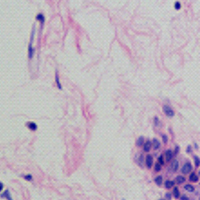Astragalus Ⅳ ameliorates the dry eye injury in rabbit model via MUC1-ErbB1 pathway

Submitted: 11 November 2020
Accepted: 18 February 2021
Published: 1 April 2021
Accepted: 18 February 2021
Abstract Views: 1078
PDF: 647
HTML: 13
HTML: 13
Publisher's note
All claims expressed in this article are solely those of the authors and do not necessarily represent those of their affiliated organizations, or those of the publisher, the editors and the reviewers. Any product that may be evaluated in this article or claim that may be made by its manufacturer is not guaranteed or endorsed by the publisher.
All claims expressed in this article are solely those of the authors and do not necessarily represent those of their affiliated organizations, or those of the publisher, the editors and the reviewers. Any product that may be evaluated in this article or claim that may be made by its manufacturer is not guaranteed or endorsed by the publisher.
Similar Articles
- Manuela Monti, Mouse development - From oocyte to stem cells , European Journal of Histochemistry: Vol. 58 No. 1 (2014)
- F. Merigo, F. Boschi, C. Lasconi, D. Benati, A. Sbarbati, Molecules implicated in glucose homeostasis are differentially expressed in the trachea of lean and obese Zucker rats , European Journal of Histochemistry: Vol. 60 No. 1 (2016)
- Zhi Wang, Guihua Jian, Teng Chen, Yiping Chen, Junhui Li, Niansong Wang, The Qi-Bang-Yi-Shen formula ameliorates renal dysfunction and fibrosis in rats with diabetic kidney disease via regulating PI3K/AKT, ERK and PPARγ signaling pathways , European Journal of Histochemistry: Vol. 67 No. 1 (2023)
- D. Curzi, S. Salucci, M. Marini, F. Esposito, L. Agnello, A. Veicsteinas, S. Burattini, E. Falcieri, How physical exercise changes rat myotendinous junctions: an ultrastructural study , European Journal of Histochemistry: Vol. 56 No. 2 (2012)
- Manuel Scimeca, Simone Bischetti, Harpreet Kaur Lamsira, Rita Bonfiglio, Elena Bonanno, Energy Dispersive X-ray (EDX) microanalysis: A powerful tool in biomedical research and diagnosis , European Journal of Histochemistry: Vol. 62 No. 1 (2018)
- H. Valpotić, A. Kovšca Janjatović, G. Lacković, F. Božić, V. Dobranić, D. Svoboda, I. Valpotić, M. Popović, Increased number of intestinal villous M cells in levamisole - pretreated weaned pigs experimentally infected with F4ac+ enterotoxigenic Escherichia coli strain , European Journal of Histochemistry: Vol. 54 No. 2 (2010)
- E. Tarantola, V. Bertone, G. Milanesi, E. Capelli, A. Ferrigno, D. Neri, M. Vairetti, S. Barni, I. Freitas, Dipeptidylpeptidase-ÂIV, a key enzyme for the degradation of incretins and neuropeptides: activity and expression in the liver of lean and obese rats , European Journal of Histochemistry: Vol. 56 No. 4 (2012)
- Carlo Pellicciari, Is there still room for novelty, in histochemical papers? , European Journal of Histochemistry: Vol. 60 No. 4 (2016)
- Alimu Keremu, Pazila Aila, Aikebaier Tusun , Maimaitiaili Abulikemu, Xiaoguang Zou, Extracellular vesicles from bone mesenchymal stem cells transport microRNA-206 into osteosarcoma cells and target NRSN2 to block the ERK1/2-Bcl-xL signaling pathway , European Journal of Histochemistry: Vol. 66 No. 3 (2022)
- N.P.E. Kadoglou, P. Moustardas, A. Kapelouzou, M. Katsimpoulas, A. Giagini, E. Dede, N. Kostomitsopoulos, P.E. Karayannacos, A. Kostakis, C.D. Liapis, The anti-inflammatory effects of exercise training promote atherosclerotic plaque stabilization in apolipoprotein E knockout mice with diabetic atherosclerosis , European Journal of Histochemistry: Vol. 57 No. 1 (2013)
<< < 8 9 10 11 12 13 14 15 16 17 > >>
You may also start an advanced similarity search for this article.

 https://doi.org/10.4081/ejh.2021.3198
https://doi.org/10.4081/ejh.2021.3198










